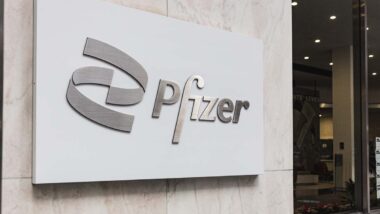Top Class Actions’s website and social media posts use affiliate links. If you make a purchase using such links, we may receive a commission, but it will not result in any additional charges to you. Please review our Affiliate Link Disclosure for more information.
Fournier’s gangrene is one of several serious side effects associated with a class of type-2 diabetic medications known as SGLT2 inhibitors, or gliflzin drugs. Normally a rare condition primarily affecting males over the age of 50 with diabetes and a history of alcohol abuse, Fournier’s gangrene has become unusually prevalent among patients of all ages and both genders who have taken drugs such as Invokana, Farxiga or Jardiance for glucose control.
Symptoms
Signs of Fournier’s gangrene may include:
- fever
- generalized weakness
- pain and/or swelling in the scrotum
- air in skin tissues (creptius, characterized popping or crackling sounds under the skin)
- foul odor
- necrotized (dead) tissue
Fournier’s Gangrene: Pathology
This particular form of gangrene was first described in 1764 and named for the late 19th-Century physician Jean Fournier, who misidentified it as a sexually transmitted disease. The reason for his mistake was that the disease primarily affects the genitalia. It is normally associated with bacterial infections and lack of sanitation; a 2006 study from Istanbul University found that approximately 33 percent of victims suffered from elevated blood sugar levels, alcoholism and malnourishment. Ten percent of those suffering from the disease had compromised immune systems due to cancer, chemotherapy or use of steroids.
Prognosis
While some research indicates a 20 percent to 40 percent mortality rate for patients with Fournier’s gangrene, more recent research involving a larger population suggests that it is closer to 7.5 percent.
Treatment
Prompt treatment is necessary, as Fournier’s gangrene can progress very quickly. It requires an aggressive course of antibiotics, and surgical removal of the affected tissue. Because the bacteria that causes the disease is anaerobic (thrives without oxygen), placing the patient in a hyperbaric chamber may be effective in killing off the microbes. If the disease is due to a gliflozin drug, the patient should be switched to an alternative treatment at the earliest opportunity.
Other Risk Factors
Normally, Fournier’s gangrene is a rare condition, affecting one of every 62,500 people, in average. The vast majority have been male, outnumbering females withj the condition by 40 to 1.
Over the 35-year period between 1984 and 2019, there were just 19 cases recorded in the U.S. among diabetics who were being treated with metformin, GLP-receptor agonists like Byetta and Victoza, or glitazone drugs such as Actos or Avandia. Since the introduction of SGLT2 inhibitors in 2013 however, there have been 55 people with the disease, all of whom were taking drugs in that class. A significant number of those patients have been women, according to DrugSafetyNews.com..
The SGLT2 Inhibitor Connection
It is not precisely known why SGLT2 inhibitors would raise the risk of Fournier’s gangrene. However, the mechanism of action with these medications suggests that they may create an environment in which harmful bacteria can thrive. SGLT2 inhibitors work by preventing the kidneys from reabsorbing excess glucose, or blood sugar. Instead, it’s passed out of the body through urination. It seems likely that the presence of this excess sugar in the genito-urinary tract would make ideal conditions for many harmful bacteria.















